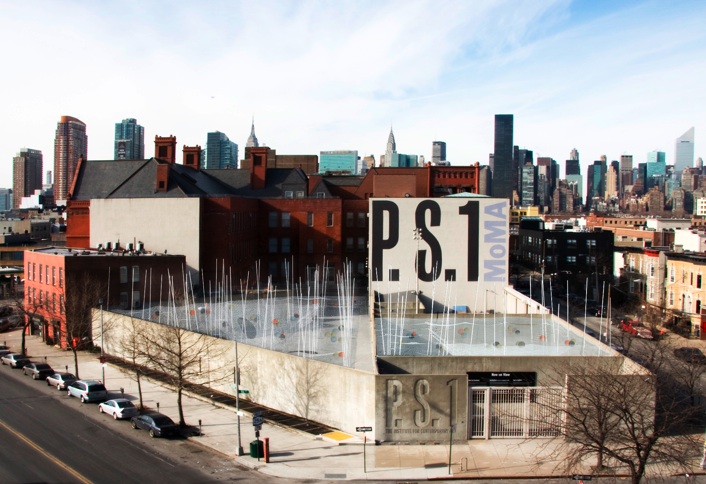
P.S. 1 and MoMA’s Young Architects Program has become a kingmaker of sorts, attending the rise of such marquee designers as SHoP, Lindy Roy, nARCHITECTS, and Work AC. It is a rare showcase for up-and-coming firms, especially after the recession has stymied opportunities for so many. This is part of the reason winning this year’s competition was so sweet for Florian Idenburg, one half—with his wife Jing Liu—of SO-IL Solid Objects Idenburg Liu.
"What’s great about it is it’s one of the few places in architecture where you can really test ideas and experiment," Idenburg said during a phone interview from his train on the way back from Harvard, where he had spent the day teaching. "There’s not much out there for young firms anymore, and certainly no opportunities like this."
SO-IL’s entry, Pole Dance, is in many ways a metaphor for these uncertain times. "What we wanted to do is propose a structure that was constantly trying to find its balance as it was influenced by people and outside forces," Idenburg explained. "It’s a take on the wider world, where we’re always trying to find balance in our lives and in everything around us." While Idenburg said this message is mainly directed at the struggle to create a sustainable future, it could just as easily represent other anxieties—job security, health care, terrorism—gripping the city, country, and world.
The pavilion design, which will be officially unveiled tomorrow, is an enigma itself, more pliant than anything yet staged in the increasingly ambitious P.S. 1 courtyard. Pole Dance begins with nearly 100 fiberglass rods measuring 2-inches around and 25-feet tall that will be anchored into the ground at 12-foot intervals. The flexible, free-moving poles are designed to rise above the courtyard walls, "to broadcast the activity inside to the city," Idenburg said.
Then, 14 feet up, at the height of the courtyard’s walls, a stretchy, trapeze-like net measuring about 9,000 square feet will be bungeed to the walls and poles. The mesh will also flex and droop, with holes cut strategically here-and-there, helping keep the net just taught enough. There is also a large hole in the middle of the main courtyard that is anchored to the ubiquitous pool—all projects must include water—that Idenburg said creates a special interior space just beyond the hubbub of the weekly parties.
Beyond providing structure to this languid object, the holes also help define it, as dozens of balls will move about and through the net, reacting as the poles are moved, creating a sort of game, though one without any rules, at least not yet. "There are no rules, but the visitors can explore and make their own rules as they experience the space," Idenburg said. The whole thing moves in uneasy concert, a reflection of its occupants, but also an illusion.
Idenburg said that such "responsive structures" are actually something he and Liu have been considering a lot lately in there work, something they would like to explore in more traditional settings as well. "It’s not just about form, it’s about the experience of going there, of shaping and affecting the architecture."
Barry Bergdoll, chief curator of MoMA’s architecture and design department, found the way the pavilion reverses the modern, mediated life and makes the virtual real especially intriguing. "Here the net is literal and physical, the space tangible, the encounters unprogrammable," Bergdoll said in a press release. "Yet the system is dynamic and interactive and—in the spirit of this year’s call for a response to contemporary issues of sustainability—all the materials can be reused and redeployable.”
This is because, as Idenberg explained, all the connections are mechanical, and the components are mostly off-the-shelf, so even if the pavilion is never rebuilt—as has been the case in the past—these pieces can at least be recycled elsewhere. To help develop the project’s complex engineering, SO-IL worked with Buro Happold, and Sciame helped with cost analysis, working to keep the future pavilion within its meager (though slightly higher than in the past) $85,000 budget.
SO-IL triumped in the competition over two other Brooklyn firms, Freecell and Easton + Combs, Cambridge’s William O’Brien, Jr., and Danish firm BIG-Bjarke Ingels Group. This year’s jury included Bergdoll, MoMA director Glenn Lowry, P.S. 1 director Klaus Biesenbach, and four others from the two museums.
"The main thing for us now is it’s a metaphor for the system, of trying to find balance in the system," Idenburg said. "And yet we also want it to be playful and energetic, where there are direct consequences to your actions."